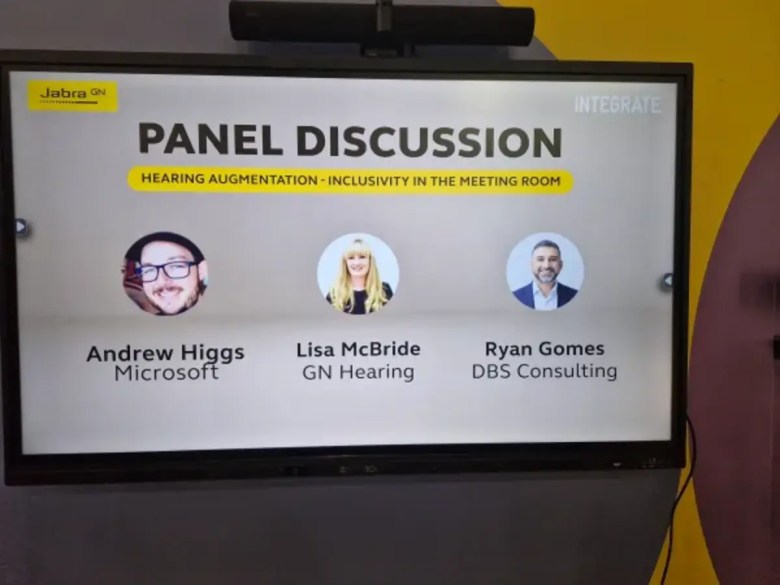Danish audio equipment specialist Jabra held a panel discussion on the latest innovations in Bluetooth technology for the hearing impaired, at the Integrate AV exhibition in Sydney. It showcased Auracast and how this technology is redefining the user experience for people with hearing impairment.
It allows for the transmission of audio to all connected speakers from a single device and can be integrated into Cochlear implants, hearing aids and earbuds, delivering clearer and more customised audio and greater accessibility.
“It is a great advancement in hearing augmentation that allows users to stream directly to Auracast-enabled devices,” according to Lisa McBride, hearing audiology manager from event partner GN Hearing. It can improve the workplace for people with hearing impairment, who she said often face challenges in the work environment. “The sound quality is amazing, and it will become more common with pricing from an entry level to the top of the range now available.”
At the heart of Auracast is Bluetooth Low Energy LE Audio, a more energy efficient version of Bluetooth, that uses less energy than traditional Bluetooth, which means longer battery life for ear gear. “Ultimately, the technology makes wireless audio more social, inclusive and practical,” McBride said.
Also attending the panel discussion was Andrew Higgs from Microsoft who said from a Microsoft perspective the technology offered a huge opportunity for solutions that are designed with dignity. “Diversity and inclusivity are core values that we exercise every day at Microsoft. We have many people with hearing impairment who come into our office who no longer have to sit in the front of the media room near the speaker, or wear something around their neck. It is so much easier with Aurocast and its ability to control the environment that best suits them is a massive thing,” he said.
Another speaker was Ryan Gomes from DBS Consulting, a NDIS provider for the Specialist Disability Accommodation market.
He said Auracast is about connecting with people, facing challenges and overcoming them together, “which is when the real magic happens.”
“Technology solutions, no matter how exciting and innovative they are, should be about making our lives better and enabling richer experiences. The challenge is getting the community to understand that people who live in SDA, and the daily issues they face, are not consulted very often. And when they are then the right supports and systems will be there, whether it is accommodation or the workplace,” he said.
“It is not overly expensive to have Auracast in SDA and there are no ongoing expenses. It not only helps the people living there but those who support them too.”
Earlier this year Auracast enhanced the concert atmosphere, delivering exceptional sound clarity and a more immersive listening experience for hearing aid users at the Sydney Opera House. It was the first global cultural institution to introduce Auracast broadcast audio, an audio innovation for live performances, into its venues for hearing aids users.

